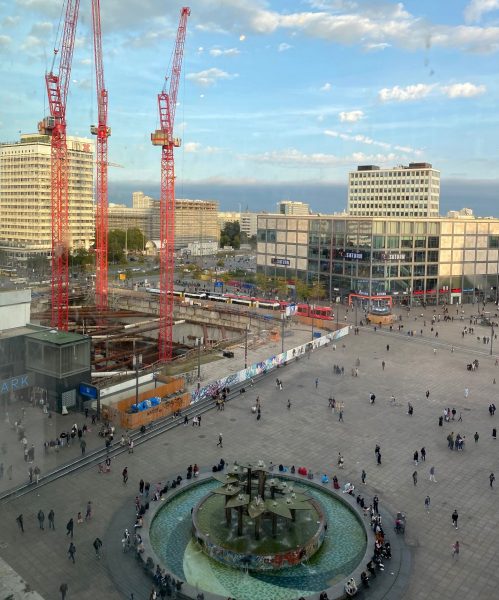Studying ant populations is a fascinating topic. Structures of these populations reveal various functions, each pursuing its own goals. Albeit the whole system is not breaking down due to well organised ways of communication. From a bird’s perspective human populations appear a bit similar to ant populations. Maybe our sets of tools we use for building accommodation for our species have an extended repertory. Our mass media might facilitate instant spreading of messages to all members of a specific community and even beyond our own hive. Watching a video of people moving around on a large square,
we are puzzled that there are almost no accidents occurring even over longer time spells. Speed adjustment is key. Respect for the other person’s trajectory is yet another precondition for the sake of the benefits for all. Even different modes of transport bicycles, scooters and the tram find their way crossing the square.
There seems to be an optimal way of adaptation to the more or less crowded place. A construction site may restrict the available space, but the crowd has little choice but to circumvent the obstacle. Climate or simple weather change necessitate adaptations. On a warm autumn day many persons decide to walk after work or school. The physiology of the population has an impact on speed patterns. Communication and meeting people is another function of the square. All these parameters are important elements of urban planning and a city’s adaptation to climate change. Cooling trees will structure meeting points and walking paths if there is too much sunshine in summer. Adaptation is easy if you start to adapt early. 

